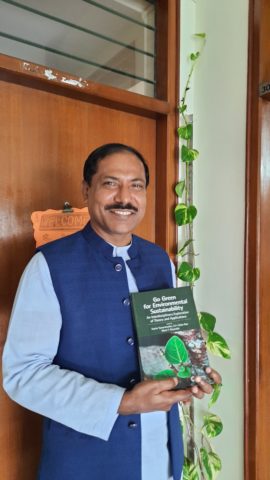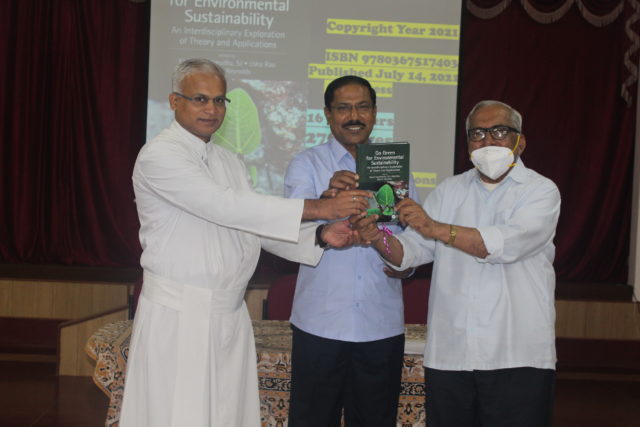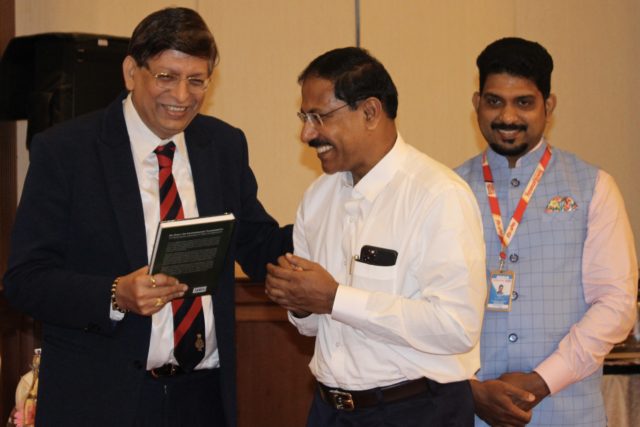The term “Jesuit” is used, almost as a synonym for the spread of education, of academic enlightenment, to the extent that its usage is often shorn of the spiritual aspect that the religious order stands for. Such has been the success of these “Soldiers of God” in spreading the light dispelling the darkness of ignorance, that they are often, more revered for what they teach than what they preach – always occupying the pole positions in stretching the horizons of knowledge.

Sustainability has died a million deaths as, the more the term is bandied loosely as a tool to claim a higher moral ground, the more meddled the average understanding becomes – about its true scale, meaning or purport. And seldom is an effort made to address the term from different vantage points – not only to access a greater understanding of what Sustainability really means, but also how it can impact life on Earth by assessing its importance to various branches of knowledge.

Rarer still has been the effort to co-opt actual field-workers with direct acquaintance of the ground realities to share their views on the subject – its meaning, how it can reverse the wheels that have already been set to motion and more importantly, the tentative solutions, as they appear to the practitioners taking a bottom-up view.
The Book that has done all this, and more, is “Go Green for Environmental Sustainability: An Interdisciplinary Exploration of The Theory and Applications”, edited by Dr Xavier Savarimuthu SJ, Dr Usha Rao and Dr Mark Reynolds. Published by the CRC Press (Taylor & Francis Group, Boca Raton, Florida, USA & Routledge Group, Oxfordshire, England, UK) whose credentials are naturally, or shall we say sustainably, beyond reproach. The book was formally launched on 8th of September 2021 by Sister Prema MC, the successor to Mother Teresa of the Missionaries of Charity in Kolkata.

This weighty tome is spread across six parts, broken into sixteen chapters that cover areas as diverse as economics and agriculture, through Finance, Business & Industry, Engineering & Technology, and of course, Environment. While it addresses terms that are dangerously close to becoming common clichés like “green business” and “green technologies”, it also addresses issues bioremediation and green chemistry, underscoring the urgent need for action so that a sustainable tomorrow can be embraced but more importantly arguing how the solutions that are being thrown up today but not only be widely accessible but also be scalable and be capable of offering solutions cutting across boundaries to the world at large.
What makes the book stand apart, is the numerous case studies – spread from the frontiers around the world – that add an invaluable dimension, that will go a long way in shifting the grains from the chaff, leading to a clearer understanding of the issues that afflict us all. Stakeholders, from Governments and policy planners to environmentalists, not to mention academic researchers and students alike will do well to go through the book with the seriousness it deserves.

Dr Nancy C. Tuchman, Founding Dean, School of Environmental Sustainability, Loyola University, Chicago in her forward has succinctly highlighted the key features of the book hoping and observing that book will inspire new innovative academic research and experiential learning to prepare the next generation of environmental leaders from the higher education sector. Her words of wisdom have, in fact, added depth to the thoughts that have brought the book to life and should be read, not as an introduction, but as a part of the academic exercise itself.
The book is dedicated to His Holiness Pope Francis, for the Encyclical “Caring for our Common Home”; Rev. Fr. Arturo Sosa, SJ, The Superior General of the Jesuits, for prioritizing the Caring for our common home as a Universal Apostolic Preference of the Jesuits; Mr. Rajinder Singh, an oasis of hope in water starved state of Rajasthan, India; Dr. Al Gore, for his clarion call on action for climate change and Mrs. Wangarĩ Muta Maathai, for her environmental conservation efforts.

The credit of bringing on board such a diverse set of thinkers (and doers) from every possible corner of the intellectual world and to have strung together the different tongues into a rosary that is capable of providing the exercise with the spark of divine faith, of course goes to the editors who have done an excellent job from the conception to the creation of a book that promises not to teach but transform.
For more information about the book:
